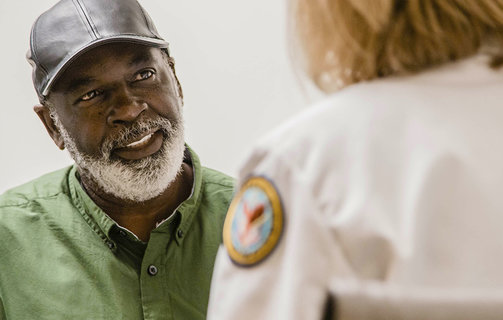Prostate Cancer: Screening, Diagnosis, Treatment Options
Learn and understand more about this common form of cancer in older men
 Prostate cancer is the most common non-skin cancer among American men. Prostate cancers usually grow slowly. Most men with prostate cancer are older than 65 years and do not die from the disease. Finding and treating prostate cancer before symptoms occur may improve your health or help you live longer.
Prostate cancer is the most common non-skin cancer among American men. Prostate cancers usually grow slowly. Most men with prostate cancer are older than 65 years and do not die from the disease. Finding and treating prostate cancer before symptoms occur may improve your health or help you live longer.
Cancer occurs when cells in the body begin changing and multiplying out of control. These cells can form lumps of tissue called tumors. Cancer that starts in the prostate is called prostate cancer. The cancer can grow and spread beyond the prostate, threatening health and life.
The prostate is a gland about the size and shape of a walnut. It surrounds the upper part of the urethra in men, the tube that carries urine from the bladder. The prostate produces most of the semen in which sperm travel. During orgasm, semen exits the body through the urethra.
As a man ages, his prostate may change. Inside a changing prostate, groups of cells may form tumors or other growths. Some may be benign (not cancerous), but they may still cause symptoms, so it is important to have a prostate exam in order to be sure.
Screening for Prostate Cancer
Whether screening for prostate cancer results in fewer men dying from prostate cancer is not clear; experts disagree on the value of prostate cancer screening. Men should talk with their health care providers about whether they want to be screened for prostate cancer.
Prostate Biopsy
If the results of your exam and tests lead your doctor to suspect prostate cancer, a core needle biopsy will be done. A thin needle is used to remove small samples of prostate tissue. These samples are checked for cancer.
Grading from Low to High
To form your treatment plan, your health care team must learn more about your cancer. What do the cancer cells look like? Has the cancer spread beyond the prostate? Cells removed during biopsy will be viewed under the microscope. Treatment will depend on how the cells look (grade) and where they are located (stage).
Controlling the Spread of Cancer and Its Symptoms
Cancer that has spread beyond the prostate can often be treated. Hormone therapy can slow the growth and spread of the cancer. Chemotherapy may help relieve symptoms and control the cancer. Cancer pain can be managed with medications.
There is no way to know for sure if you will get prostate cancer. The older a man is, the greater his risk for getting prostate cancer. Talk with your health care provider to take the next steps in reducing your prostate cancer risk.
Remember that Secure Messaging is an excellent way to contact your health care team about learning your options and making decisions.
Please vote in our unscientific poll. All responses are anonymous.
Read More
Living with Prostate Cancer (Veterans Health Library)
Prostate Cancer (Centers for Disease Control and Prevention)
Who Is at Risk? (Centers for Disease Control and Prevention)
Updated September 21, 2020

